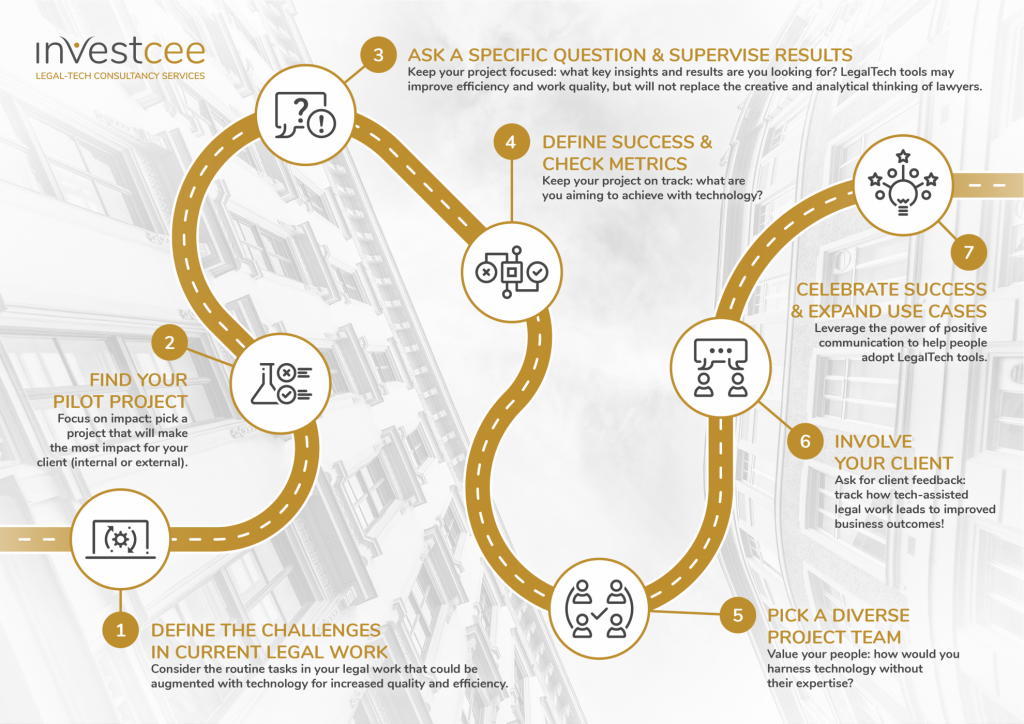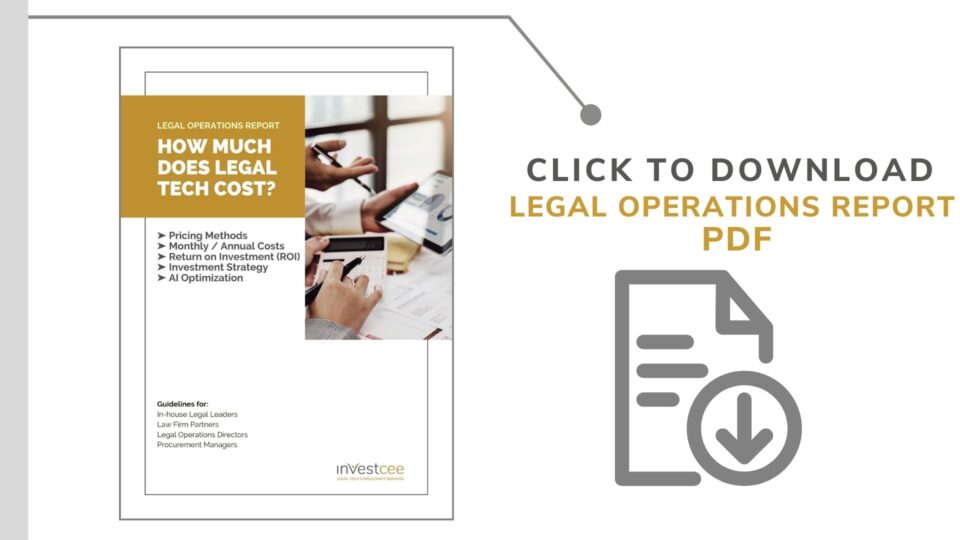Growing from a simple idea into a dominant legal innovation event in Central Eastern Europe (CEE) was as quick as lightning for the Innovative Legal Services Forum (ILSF). But if success looks effortless, it only means there was even more work behind the scenes than one could possibly imagine. While positive change may be invisible (easy to spot the negative, no?), it usually does not happen overnight. And it is certainly not effortless. In the legal industry, in particular, the paradigm shift takes quite a bit of time and effort. Less speaking, more doing. But how?
Many of us newlaw enthusiasts (diversity hint intended) are dedicating valuable resources to figure out the ‘how’ in legal innovation. {The ‘why’ is pretty obvious from the dysfunctionalities of the old paradigm.} Our team from InvestCEE LegalTech Consultancy shared know-how at the interactive workshops we held at ILSF2019 (on the pre-conference day) just to see specific aspects of our approach reinforced by a number of speakers on the main conference day.
The Innovative Legal Services Forum 2019 revealed alignment in thought around the theoretical ‘how’ of legal process innovation. It needs to include strategy, structured implementation and culture (mindset) change. While each organization’s journey may eventually look rather different, the stakeholders will need to translate theory into action in each case. Here’s a flavor of how we facilitated this process for our workshop participants.
Exercise #1 Be clear about the value of your legal work. And start measuring custom KPIs.
We asked participants to consider how the value is being created in legal work on an individual, team and organizational level. The post-it notes revealed no surprise. There is value in efficiently delivering high-quality work product. There is co-creation of value in well-managed, transparent teamwork. There is a strategic value that the legal teams can bring to business by aligning with the company goals and proactively enabling efficiencies rather than passively saving costs.
While it was easy to spot the value in legal work, it turned out to be challenging to demonstrate it properly. The handwritten words from the post-it notes (like efficiency, teamwork, good communication, strategic alignment) do not necessarily translate into the time units or the total value figures attached to contracts or projects that we currently use for measuring value today. To innovate, we need to find new ways to capture the value of legal work and then track, measure and report on it in the context of a given organization.
For this first exercise, we used the ‘Strategic Plan Template’ prepared by our Legaltech Marketplace partner Xakia Technologies. It is also available for download here.
Exercise #2 Use technology to wrap & scale value from your current service offering. And design new legal services to diversify revenue streams.
Before discussing technology, we asked participants to consider the client lifecycle in the context of their own legal services. We found this step essential for two reasons: (i) to track the optimal data flow in legal services and (ii) to identify the bottlenecks a lawyer may face in the various stages of the service delivery. As we have heard from Ben Hunt on the main stage of #ILSF2019:
“approaching #legaltech with a problem-centric view will allow you to map out where you currently stand in your legal innovation journey and target where you wish to be.”
While most lawyers are familiar with back-office technology (document management systems, invoicing, CRM), we found that implementing client-facing technology is what enables more innovative legal services. This could mean for example ‘wrapping’ internal standard form documents into smart, interactive templates. Or offering comprehensive contract management services to clients by enabling automated drafting, real-time negotiation or integrated e-signature along with AI-assisted data extraction for the post-signing phase.
For the client lifecycle exercise, Marie Bernard shared bits of the innovation know-how from her service design boutique Bleu de Prusse.
Exercise #3 Identify key pilot projects. And structure your implementation roadmap to drive cultural change in your organization.
In fact, this last exercise was meant to be the homework for our workshop participants. Finding the right use cases for piloting with legaltech tools is quite essential for those who take legal innovation seriously. Investing in technology may certainly help with legal innovation goals, but that in itself will not replace old paradigm service delivery with an innovative business model.
To help structure innovation projects, at the end of the workshop we handed out our 7-step roadmap that you can also find below. This journey is actually what we are so passionate about at InvestCEE LegalTech Consultancy. We find purpose in understanding our clients’ innovation journeys, the goals that drive their need for change and particularly in helping them succeed.




